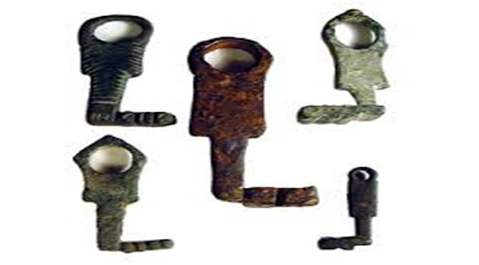Under lock and key
Humans have always had the need to keep their property safe and thousands of years ago the best that we could do was to use rope and tie knots. This didn’t exactly keep things safe but we could tell if somebody had tampered with it. Initially locks were made from wood and then metal and became more intricate as time went on. It is believed that the ancient Greeks, Egyptians and Romans all developed locking mechanisms separately from each other. In Ancient Egypt mechanical locks started being made some 6000 years ago. These consisted of basic pin and tumbler constructions made from wood. A large key had pegs that corresponded to the holes and pins in the lock. The key would be able to lift the pins out and remove the bolt.
Designs improved under the Greeks and Romans and it was the Romans who introduced metal into their locks. These locks were much more effective against attack and used iron. For the first time in history, keys became small enough to be carried on the person, in a pocket, a pendant or placed into a ring. I wonder if the Romans ever locked themselves out? For a locksmith in Belfast, see http://www.belfastlocksmiths247.co.uk/

After the fall of the Roman Empire, not much happened in the development of the locking mechanism. During the Middle Ages, focus was instead on confusing lockpickers with new tactics. Locks contained multiple key mechanisms and keys became very intricate. Keyholes were obscured by ornaments and even fake locks and mechanisms were added to them.
In the 1700’s engineers finally created small and sturdy mechanisms. The double-acting tumbler lock was invented by Robert Barronin in 1778 and Joseph Bramah invented the Bramah Lock which remained unpickable for 67 years! A famous name in the world of locks, Jeremiah Chubb developed the detector lock in 1818. Another famous name, Linus Yale designed the first pin tumbler lock in 1848. In 1857 and 1873, James Sargent invented both the first combination lock and the first time lock mechanism. In 1916 the first jemmy-proof lock came into being thanks to Samuel Segal and Harry Soref gave us the first padlock in 1924.


